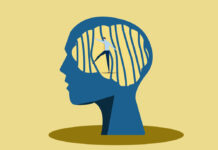A recent article, published in the Journal of Critical Psychology, conducted mixed methods research to examine the impact of critical consciousness education on gender identity and the perception of sexism. Nia Phillips, a psychologist at Prince Edward Island University, designed the study to test how individual identity factors may interact with education to shape perceptions of bias. The study compared the influence of two courses on students’ perceptions, an introductory women’s studies course and an introductory personality psychology course.
“Whereas women’s studies curriculum is inherently reliant upon recognition of systemic and structural perspectives, personality psychology courses typically devote little consideration to the influence of the social world and by extension fail to articulate the how course topics might be shaped by systemic factors,” Phillips explains.

Research shows that education on how inequality is ingrained in social systems and structures can lead to greater recognition of discrimination. Studies have also found that racial bias shapes the use of psychiatric diagnosis.
Critical consciousness approaches encourage people to evaluate their social context and evaluate how systemic features of the world shape their experience. In this way, critical consciousness education could lead to greater self-awareness, an appreciation of systematic discrimination, and an improved understanding of sociocultural identities.
“It is important to recognize that systemic understandings of inequality are not monolithic. As a result of engagement in an educational context that shifts focus from naïve, individual perspectives to systemic conceptions of injustice, people’s personal understanding of the nature and causes of inequality become more diverse and complex. These learners also, more readily recognize the presence of, and problem, associated with phenomena such as the patriarchy as well as male, white, and heterosexual privilege,” Phillips notes.
“Moreover, these changes in conceptions of bias are often accompanied by a decrease in individual prejudice and a greater appreciation of diversity.”
The study compared results of pre-and post-testing between two introductory courses related to identity. There were 75 students participating in the research from the course for Women’s Studies and 51 students from the course on Personality Psychology. In general, the women studies course emphasizes political and structural implications in course content and the personality psychology course took a more individualized and apolitical approach to the course content. There were five hypotheses that the author tried to answer with this project.
- Students in women’s studies will show a greater increase in gender identification over the semester than students in personality psychology.
- When it comes to gender identity content, women’s studies students will incorporate more critical and non-traditional concepts into their understanding of their gender identity relative to personality psychology students.
- Women’s studies students will be more likely to construct ambiguous event as the product of sexism than personality psychology students.
- There is a positive relationship between gender identification and sexism perception.
- Individuals who incorporate critical, nontraditional, or discrimination-relevant concepts into their gender identity will be more likely to make attribution to sexism in ambiguous situations than those who do not.
The results did not support the first or second hypotheses. For the first hypothesis on gender identification, the results from women studies students showed a lower level of gender identification than personality psychology students. The author proposed that these unanticipated results may be the result of comparison standards. When gender is a perpetual topic of discussion among students in the class, students may feel gender is not as much of a consideration in their daily life.
As for the second hypothesis, the response rates were too low to allow for sufficient statistical power to conduct analyses. However, the data indicated that women’s studies students became more likely to mention that they were wrestling with ideas about their own gender identities over the course of the semester.
The rest of the hypotheses were supported by the analysis.
“Participants in the women’s studies course were more likely than participants from personality psychology to construct ambiguous events as the product of sexism for all three types of events (individual, systemic, and gendered traditions).”
Phillips acknowledges that this finding may result from a possible selection bias. Students who opt-in two women’s studies courses are more likely to recognize the sexism overall than students who opt-in to personality psychology.
“Gender identification significantly predicated perceptions of sexism in individual scenarios and systemic events. These findings indicate that greater identification as a woman was associated with a greater perception of sexism.”
In addition, the data indicated that personal struggle significantly mediated the relationship between course and sexism perception.
“This analysis suggests that course differences in recognition of sexism in gendered traditions were the result of increased internalization of women’s struggle into ones’ gender identity.”
Based on the findings, Phillips suggests that the overemphasis on individual-level factors and the lack of discussion about social structures and systems may hinder critical consciousness development in psychology courses.
“Critical-consciousness education changes how individuals understand their world by broadening understandings of what constitutes sexism, while also impacting understandings of the self, promoting a redefinition of gender identity,” Phillips concludes. “By encouraging people to recognize the political and motivational factors promoting inequality, critical consciousness-based education also promotes understandings of reality that lead to liberation from oppressive social systems.”
****
Phillips, N. (2020). The Influence of Critical Consciousness-Based Education on Identity Content and Perceptions of Sexism. Awry: Journal of Critical Psychology, 1(1), 77-88. (Link)














